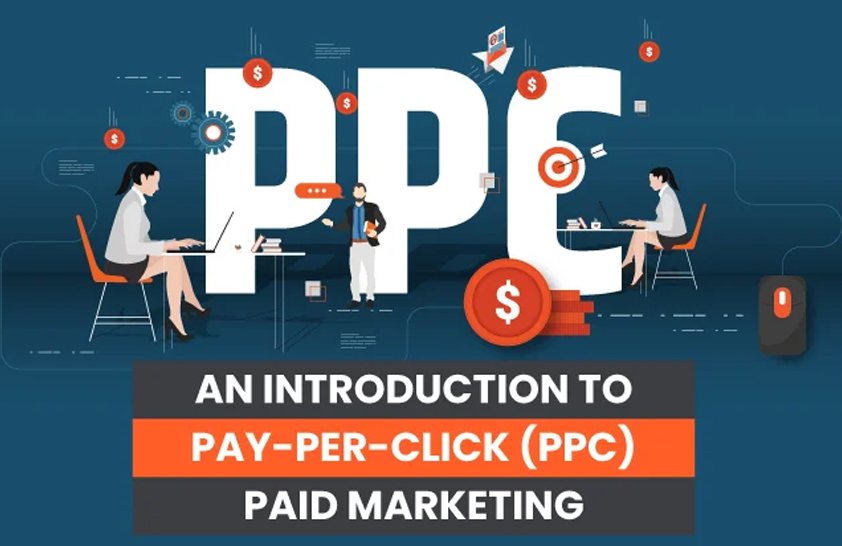CPM vs. PPC: Which Advertising Strategy is Best for Your Business 2025?
In today’s digital age, online advertising is a crucial component of any successful marketing strategy. Whether you are a small business owner or part of a larger enterprise, understanding different advertising strategies is essential for driving traffic and maximizing your return on investment (ROI). Two of the most common advertising models are CPM (Cost Per Thousand Impressions) and PPC (Pay Per Click). Both offer distinct advantages, but deciding which one is right for your business depends on various factors such as your goals, target audience, and budget. In this article, we will explore the differences between CPM and PPC, their benefits, and how to choose the best option for your business
Understanding CPM (Cost Per Thousand Impressions)
CPM, or Cost Per Thousand Impressions, is an advertising model where advertisers pay for every 1,000 times their ad is displayed on a platform, regardless of whether users click on it. It is primarily used for brand awareness campaigns because the goal is to get the ad in front of as many eyes as possible. This model is ideal for businesses looking to reach a broad audience and increase visibility, rather than directly driving traffic to a website or landing page.
With CPM, advertisers can control their budget and set the maximum amount they are willing to pay for 1,000 impressions. It’s often used on platforms like Google Display Network, social media networks, and banner ads on websites. One of the main advantages of CPM is that it offers predictable costs. Since you know the cost for every 1,000 impressions, it makes it easier to plan and allocate your advertising budget effectively.
Understanding PPC (Pay Per Click)
PPC, or Pay Per Click, is an advertising model where businesses only pay when someone clicks on their ad. This model is commonly used in search engine advertising, such as Google Ads, where advertisers bid for placement in search engine results pages (SERPs). Unlike CPM, PPC focuses on generating immediate traffic and is performance-driven, meaning businesses pay based on user interaction with their ad.
The key advantage of PPC is its direct approach to driving traffic. Since you only pay when someone clicks on your ad, it can lead to a more targeted audience and higher conversion rates, especially if your ad is well-targeted and relevant to the searcher’s query. PPC is ideal for businesses aiming to achieve specific goals, such as sales, sign-ups, or lead generation, as it allows you to measure the effectiveness of your campaign more easily.
Key Differences Between CPM and PPC
While CPM and PPC both aim to help businesses advertise online, they differ significantly in their approach. The most obvious difference is how advertisers are charged: CPM charges for impressions, while PPC charges for clicks. This means that CPM is better suited for brand awareness campaigns where visibility is the main objective, while PPC is better for performance-driven campaigns focused on driving traffic or conversions.
Another key difference is the targeting capabilities. With CPM, the primary goal is to get your ad in front of as many people as possible, regardless of whether they interact with it. In contrast, PPC focuses on targeting specific audiences based on keywords, demographics, or other criteria, making it a more precise way to drive relevant traffic.
When to Use CPM for Your Business
CPM is ideal for businesses that are looking to raise brand awareness and reach a large audience. If your goal is to familiarize people with your product or service and keep your brand top of mind, CPM could be the best option. This model is also suitable for businesses in highly competitive industries or those with a visual product that benefits from wide exposure, such as fashion, beauty, or entertainment.
Additionally, CPM works well if your business is aiming to expand into new markets or geographic areas where you need to introduce your brand. Since CPM doesn’t require user interaction to incur costs, it’s a cost-effective way to ensure maximum exposure without needing to focus on conversion rates.
When to Use PPC for Your Business
PPC is an excellent choice for businesses that want to drive immediate traffic to their website and track conversions closely. If your goal is to generate leads, increase sales, or push customers down the sales funnel, PPC is the ideal strategy. With PPC, you only pay when someone clicks on your ad, meaning you are essentially paying for high-quality traffic that has already shown interest in your offering.
If your business is focused on a specific niche or product, PPC allows for highly targeted advertising based on keywords, geographic location, or user behavior. This makes it easier to reach potential customers who are actively searching for your products or services. Furthermore, PPC provides detailed analytics, allowing you to measure the effectiveness of your ads in real-time and make necessary adjustments.
Benefits of CPM Advertising
One of the main benefits of CPM advertising is its ability to maximize brand exposure. Since businesses pay for impressions rather than clicks, they can ensure that their ad reaches a wide audience, increasing the chances that people will recognize their brand. This is especially beneficial for new businesses or those launching a new product.
CPM also offers more control over your ad placements and allows for better budget management. With a fixed cost per 1,000 impressions, it is easier to predict how much you will spend based on your desired level of exposure. Additionally, CPM is great for retargeting campaigns, as it allows you to continuously show your ad to the same group of people, helping keep your brand top of mind.
Benefits of PPC Advertising
The most significant benefit of PPC advertising is its ability to drive targeted traffic. Since you are paying for clicks, you can focus your efforts on attracting users who are actively searching for products or services similar to what you offer. This can result in higher conversion rates and a better return on investment.
PPC also provides a wealth of data, allowing you to measure campaign performance in real-time. You can track key metrics such as click-through rate (CTR), cost per click (CPC), and conversion rate, helping you make data-driven decisions. Furthermore, PPC campaigns can be easily adjusted and optimized, ensuring you are always getting the most out of your ad spend.
CPM vs. PPC: Cost Efficiency
When it comes to cost efficiency, the decision between CPM and PPC depends largely on your campaign objectives. If your goal is to maximize brand visibility at a fixed cost, CPM may be the more cost-effective option. On the other hand, if you are looking to drive specific actions, such as website visits or sales, PPC could be the more efficient choice, especially since you only pay for clicks.
However, PPC can become expensive if not carefully managed, particularly in highly competitive industries where the cost per click can be high. In contrast, CPM offers a more predictable cost structure, making it easier to stay within your advertising budget. Ultimately, the right choice will depend on your business objectives, budget, and the type of campaign you are running.
How to Choose the Right Strategy for Your Business
The decision between CPM and PPC should be based on your business goals. If you are focusing on brand awareness and long-term exposure, CPM may be the better choice. However, if you are looking for immediate, measurable results, such as lead generation or sales, PPC is the way to go.
Consider your target audience and where they are in the buying cycle. If your audience is in the awareness stage and needs to be introduced to your brand, CPM can help build visibility. On the other hand, if your audience is already considering a purchase or has demonstrated interest in your product, PPC can help convert them into customers.
Measuring the Success of CPM and PPC Campaigns
Measuring the success of your campaign is essential, regardless of whether you choose CPM or PPC. For CPM campaigns, success is often measured by the number of impressions and the reach of your ad. However, it’s also important to track metrics such as engagement and brand recall, as these can give you a better understanding of the effectiveness of your campaign.
For PPC campaigns, success is typically measured through key performance indicators (KPIs) such as click-through rate (CTR), conversion rate, and cost per acquisition (CPA). Since PPC campaigns are performance-driven, tracking these metrics will help you determine the ROI of your advertising spend and make adjustments as needed.
Combining CPM and PPC for a Balanced Strategy
In some cases, businesses may find that using both CPM and PPC in tandem is the best strategy. For example, you could use CPM to generate brand awareness and reach a broad audience, while using PPC to drive targeted traffic and conversions. This combined approach allows you to maximize the benefits of both strategies and create a comprehensive advertising plan that addresses different stages of the customer journey.
For instance, CPM can be used to build awareness and interest in your products, while PPC can then be used to capture leads from individuals who have already interacted with your brand. By leveraging both strategies, you can create a more robust advertising campaign that drives both short-term results and long-term growth.
The Importance of Targeting in Both CPM and PPC
Targeting is critical to the success of both CPM and PPC campaigns. While CPM campaigns focus on reaching a wide audience, effective targeting ensures that your ads are seen by the right people. With detailed targeting options on platforms like Google Ads and Facebook, you can segment your audience based on demographics, interests, behaviors, and more.
In PPC campaigns, targeting is even more crucial. Since you are paying for clicks, you want to make sure your ads are shown to individuals who are likely to convert. By using precise targeting based on search intent, geographic location, and device type, you can increase the likelihood of attracting quality traffic and improving your ROI.
Conclusion: Which Advertising Strategy Is Right for Your Business?
Both CPM and PPC have their unique advantages and disadvantages, and the right choice depends on your business goals, budget, and target audience. If your primary objective is to build brand awareness and reach a wide audience, CPM could be the ideal solution. On the other hand, if you’re focused on driving targeted traffic and achieving measurable results, PPC may be the better

